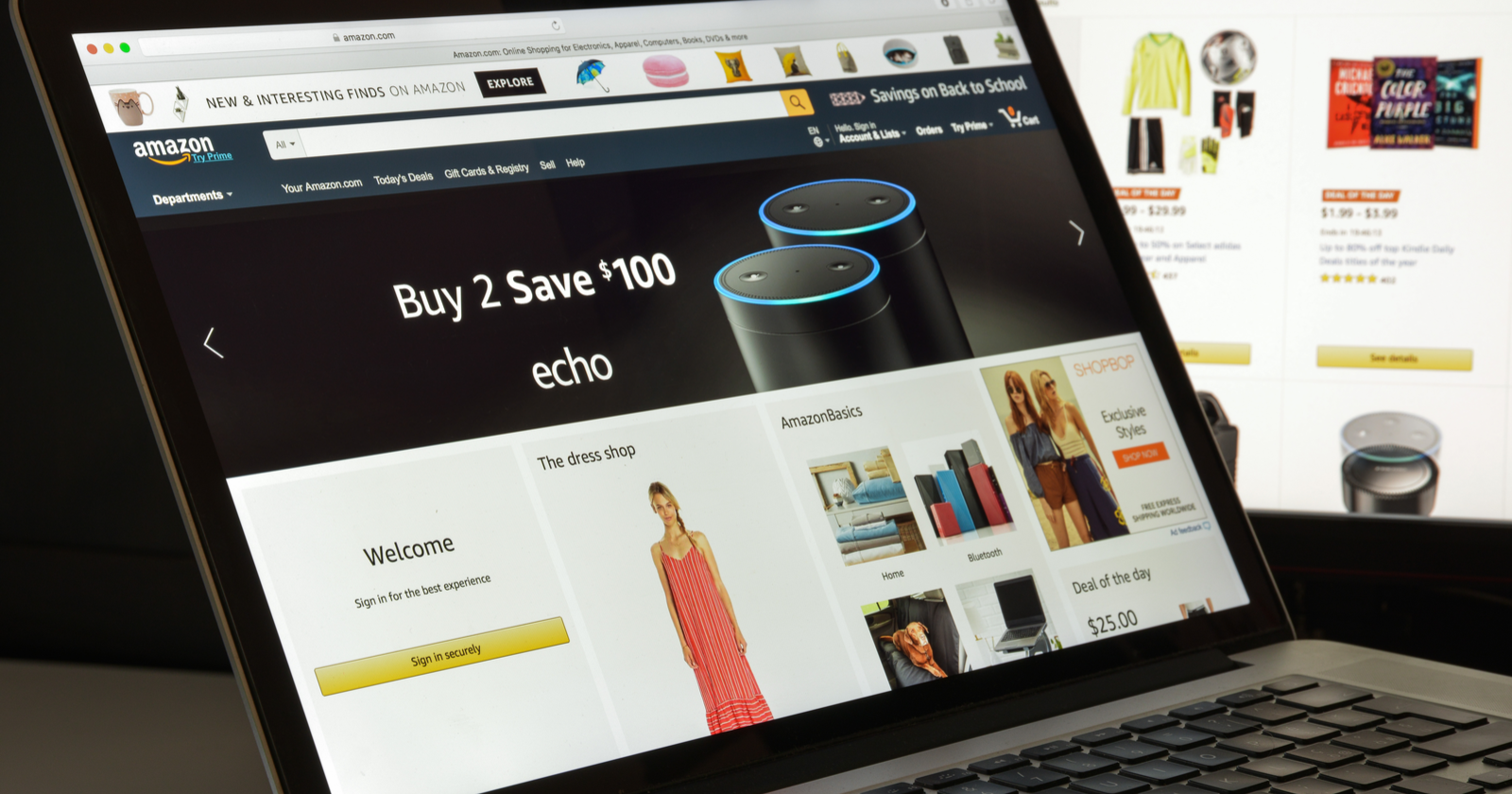Everything went better than planned.
Your items are selling on Amazon faster than you ever imagined.
And it is a complete nightmare.
Everywhere you turn there is:
- Price erosion on your products.
- Lower margins for your company.
- Distribution headaches.
“Our sales on Amazon increased faster than we could ever have imagined. However, after all the dust settled, we found that as our sales on Amazon decreased our sales on our website, where we make the best margins, slowed down…”
This is something that I regularly hear from young brands wanting to highlight their products on Amazon.
How Can Great Sales on Amazon Be a Problem?
Now if you are reading this while struggling to get your product to move as anticipated, you might wonder how having too much success too fast could be a bad thing.
Amazon is a complicated marketplace. Because there are multiple ways that people source and sell on Amazon, it can be hard to anticipate some of the problems of quick success if you are newer to the platform.
When you have rapid growth, it can cause changes in all of your other distribution channels. Most importantly your independent ecommerce site.
The success you have on Amazon can easily cannibalize sales from your ecommerce site, which in general, has higher margins for the manufacturer.
Amazon has built up an incredible amount of consumer trust.
When you combine that with the massive adoption rate of Amazon Prime and the low friction check out process they have implemented, you create a shopping experience that is so preferred by the consumer that many customers simply won’t buy if the product isn’t on Amazon.
When you consider that over 50 percent of American households will have a Prime membership in 2019 alone, it becomes clear that it can be an expensive proposition to ignore Amazon completely.
To capture those avid Prime buyers, your product has to be on Amazon. However, how can you best protect your higher margin sales distributions in the process?
How to Reduce the Impact of Your Success on Amazon to Your Website Sales
There are two ways that you can reduce the impact of your success on Amazon to your website sales:
- Price Control: Controlling the price on Amazon in comparison to your ecommerce site keeping loyal existing customers and price-sensitive buyers purchasing directly from you. This can be done with promotions and coupons on your site.
- Distribution Control: Controlling the amount of product on Amazon and who is selling. Protecting the distribution of your product can insulate you from the adverse effects of price erosion on the Amazon platform.
Your Website Pricing
Until recently, there was a rule that in the Terms of Service (TOS) for selling on Amazon that required companies to ensure that the price they offered on Amazon was the same or lower than their website offer.
Now that the price parity clause has been removed from the Amazon Terms of Service, one of the simplest things to do is to have your price be slightly below the price of Amazon.
The reason this is so effective is that the Amazon Prime customer is so loyal to making their purchases on Amazon they seldom check to find the lowest price outside of Amazon.
However, for those loyal customers who have already been buying from you and the price-sensitive customer, you can encourage them to purchase directly through the site.
If you use this strategy you also have to make sure the price of your items on Amazon stay at or above your minimum advertised price (MAP) and website prices.
1. Controlling Your Price on Amazon
When you are looking at controlling your price on Amazon, you have to first consider the platform you are using. While from the customer experience all items on Amazon seem to have the same interface.
In reality, there are two different ways to make your products available on Amazon selling physical products on Amazon:
- Vendor Central: Selling to Amazon. Where Amazon gets to set the price and for the most part dictate your inventory levels. This is currently an invite-only program.
- Seller Central: Selling on Amazon. Where the seller sets the price and decides how much inventory is at Amazon. This program is open to all without an invite.
I am not going to go into the virtues of each platform in this article. However, if you sell to Amazon (sometimes called 1P) through Amazon Vendor Central, you have to consider how Amazon will be pricing your items.
Remember, if your price falls below your website or other channel prices, you can lose your higher margin sales to Amazon.
According to Amazon, they say they don’t price match. However, if you are selling to Amazon on Vendor Central, Amazon will often match the lowest price that they find for your product.
Getting Amazon to raise the price back up can sometimes be a herculean feat. However, in some cases, if the algorithms see that the lower prices have been raised from the websites they are monitoring, they will restore the price the items originally sold at.
That said, if you have multiple sellers on the listing, getting the price restored can mean a rehaul of your entire distribution channels.
Amazon is a site where prices are almost completely dictated by supply and demand.
The better your product is ranking on Amazon, the more Amazon Vendor Central could be interested in selling your product, but also the more resellers will be looking to purchase your items.
What happens with the pricing of many items on Amazon is that while the product has more demand than supply, the price holds steady.
As resellers jump on the listing, supply can start to outpace demand and sellers anxious to move their inventory drop their price.
This causes a cascading effect for all of the resellers on that listing all matching the lowest price seller.
2. Controlling the Price of Resellers
Amazon has no financial interest in helping you protect your price or margins on Amazon. The lower the price, the better Amazon looks to consumers.
Amazon does not have any way for brands or manufacturers to remove sellers based solely on the price they are offering.
There is a way to control your price and protect not only the sales on your ecommerce site but also the sales from your brick and mortar stores. That is to control your distribution on Amazon.
Controlling your distribution is the most effective way to protect your products from price erosion on Amazon.
For most brands, this means having strong reseller agreements in place with your distribution channels and individual sellers.
Casey Vaughn is an attorney at Vaughn Law. She helps brands and sellers with the many legal issues that can come from selling on Amazon. Her advice:
“Starting with a robust distribution agreement is the best thing a brand or manufacturer can do to control its products and protect its prices over the long term. These agreements set out exactly what you expect from resellers, including your MAP policy and where the products may be resold. When resellers sign your contract, they agree to be legally bound by your terms. If someone does not abide by the terms after signing, they are in breach of contract, and you have several easily enforceable remedies at your disposal. For resellers, many appreciate knowing up front what is expected of them. Sitting down and having a real tête-à-tête about what is expected from both sides through this type of distribution agreement can save many headaches in the future.”
Once your price starts to plummet, it can take 3-9 months to recover from the price disruptions on Amazon.
The key to protect the future sales of your products is to:
- Have a clear and enforceable reseller agreement.
- Limit the number of sellers offering your product on Amazon.
Having a Plan Is Key
It is possible to both sell on Amazon to capture as many Prime customers as possible while limiting the number of sales that you might lose on your higher margin ecommerce site.
With its large base of customers ready to buy new products, it can be tempting to rush into selling on the Amazon platform.
However, to achieve long-term success, it is essential to:
- Think about the consequences of selling on Amazon.
- Have a clear plan.
- Understand what drives the prices on the market.
Conversely, just not having your product on Amazon to avoid the potential pitfalls of the marketplace can lead to loss of control of how your product is represented and marketed in Amazon.
Anyone with a Seller account can create a listing, and if your product has any real success, it will be put on Amazon by a third-party seller at some point.
If you aren’t monitoring Amazon as a sales channel, you can lose control not only of the price your items are being sold at but also the way your products are represented. So avoiding Amazon isn’t the answer either.
It comes down to:
- Having a clear plan to make your products continue to convert on your independent website.
- Understanding how pricing on Amazon works and how you can control your prices on Amazon.
More Resources:





